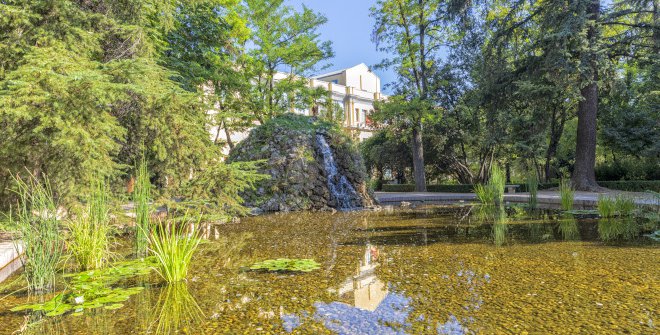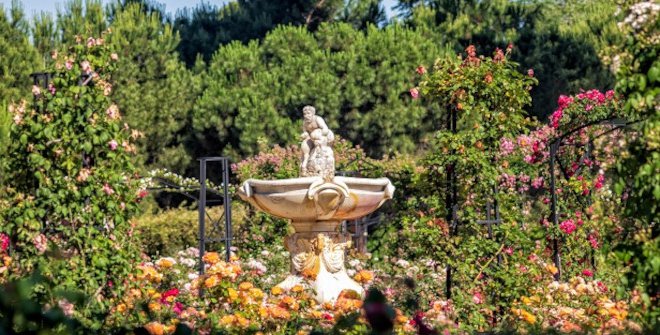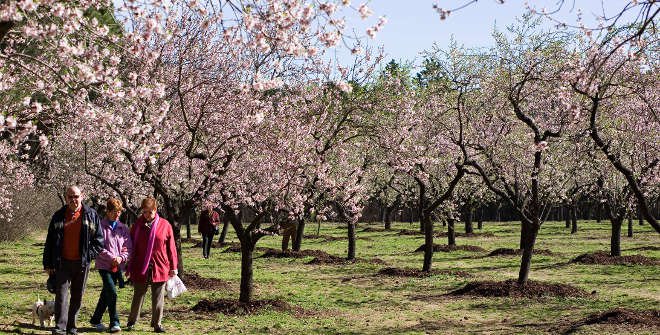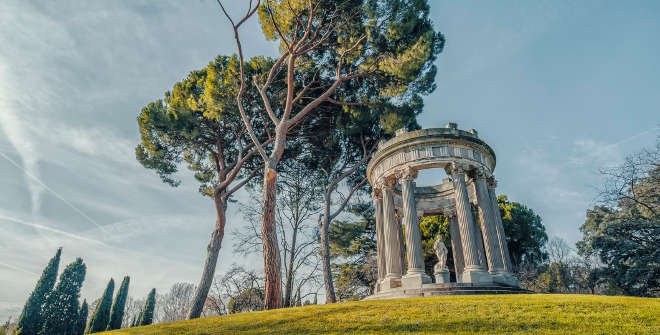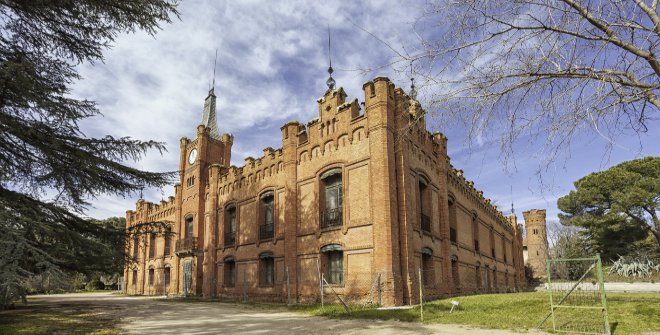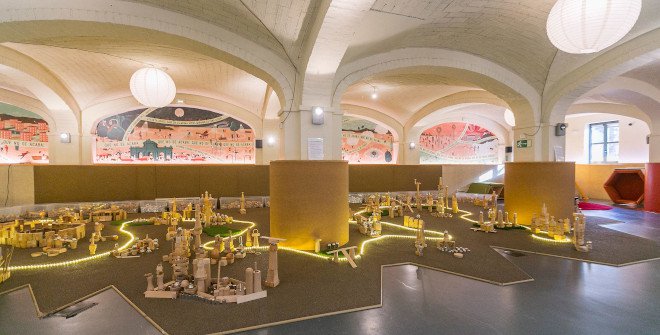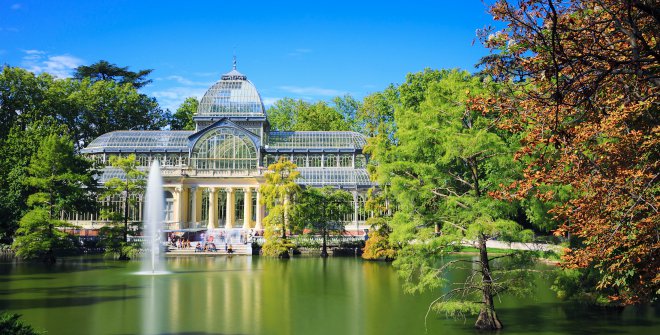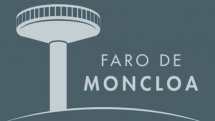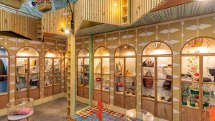Explore gardens, parks and former country estates
Set in the fertile plain of the River Manzanares about fifty kilometres from the Guadarrama Mountains, Madrid is one of the world’s greenest cities. In addition to Casa de Campo Park, El Retiro Park and the gardens of the Royal Palace, many outdoor spaces in the capital lend themselves to leisurely walks full of art and history, among trees that are centuries old. Read on to discover some of them!
Published in esMADRIDmagazine in October 2023
It’s hard to imagine Francisco de Goya creating his famous painting The Witches’ Sabbath to preside over one of the rooms in El Capricho Palace, which is currently being refurbished. The Romantic-style gardens seem an unlikely setting for the coven that can now be viewed at Lázaro Galdiano Museum. The painting was commissioned by María Josefa Alonso Pimentel, Duchess of Osuna. A lover of the arts, literature and music, she wanted to recreate the Petit Trianon of Versailles on her property, located on what were at the time the outskirts of Madrid. That lofty goal resulted, in the late 18th century, in what is now the historic garden of El Capricho de la Alameda de Osuna Park. It’s only open at weekends and on public holidays. Covering barely 14 hectares, it’s home to lilacs, oak trees, cypresses, pine trees... and the odd monument commissioned by the duchess. She wanted her own wharf—and she got it, along with fountains, a little temple dedicated to Bacchus, a hedge maze designed for romantic games, a well and even an apiary in front of which she used to enjoy a nice cup of hot chocolate.
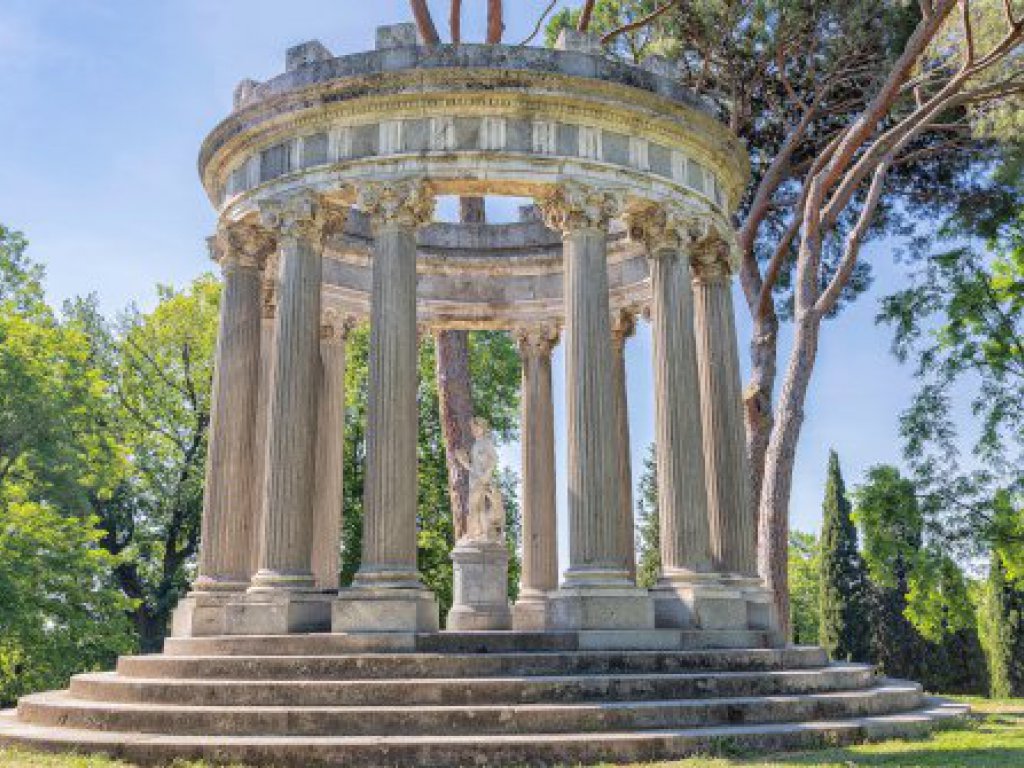
According to chronicles from the era, she even hired a man to grow his nails and hair long so he could pass himself off as a hermit in the little sanctuary in the garden, which was abandoned during the French invasion. After the Peninsular War, the duchess set out to restore the property to its former glory, constructing the Casino de Baile dance hall as well as new rooms for the palace. Upon her death, her nephew Pedro de Alcántara inherited the property, which in 1835 hosted the first horse race held in Madrid. El Capricho Park holds another secret: a bunker built 15 metres underground by the Republican army during the Spanish Civil War, around the year 1937 (guided tours: see the Pasea Madrid programme).
Very close by, also in the district of Barajas, there’s another oasis that offers the perfect escape from the hustle and bustle of the city, despite being a stone’s throw away from IFEMA, a trade fair centre with a busy calendar of events. Juan Carlos I Park opened on 7 May 1992; the year Madrid was named European Capital of Culture. Located in the area of the old Olivar de la Hinojosa olive grove, it’s laid out around a large ring. There are lots of things to see here: an artificial river, two ponds, La Estufa Fría greenhouse, gardens like that of Las Tres Culturas, and the Senda de Esculturas, a spectacular “sculpture path” comprising 19 works by artists of different nationalities. Two are particularly popular: Fingers, by Chilean artist Mario Irarrázabal, and Mexico Space, by Mexican artists Andrés Casillas and Margarita García Cornejo. The latter is an eye-catching red circle atop one of the park’s pyramids. The green space itself makes for one of the largest in Madrid, although it’s not as big as Valdebebas-Felipe VI Forest Park in the district of Hortaleza. Sprawling across 470 hectares, it takes the shape of a large tree and contains areas with open fields, a maze, an arboretum and landscaped terraces. It has representative species from five of central Spain’s ecosystems: the Iberian System, the Montes de Toledo mountain range, the Central System, La Alcarria and La Mancha.
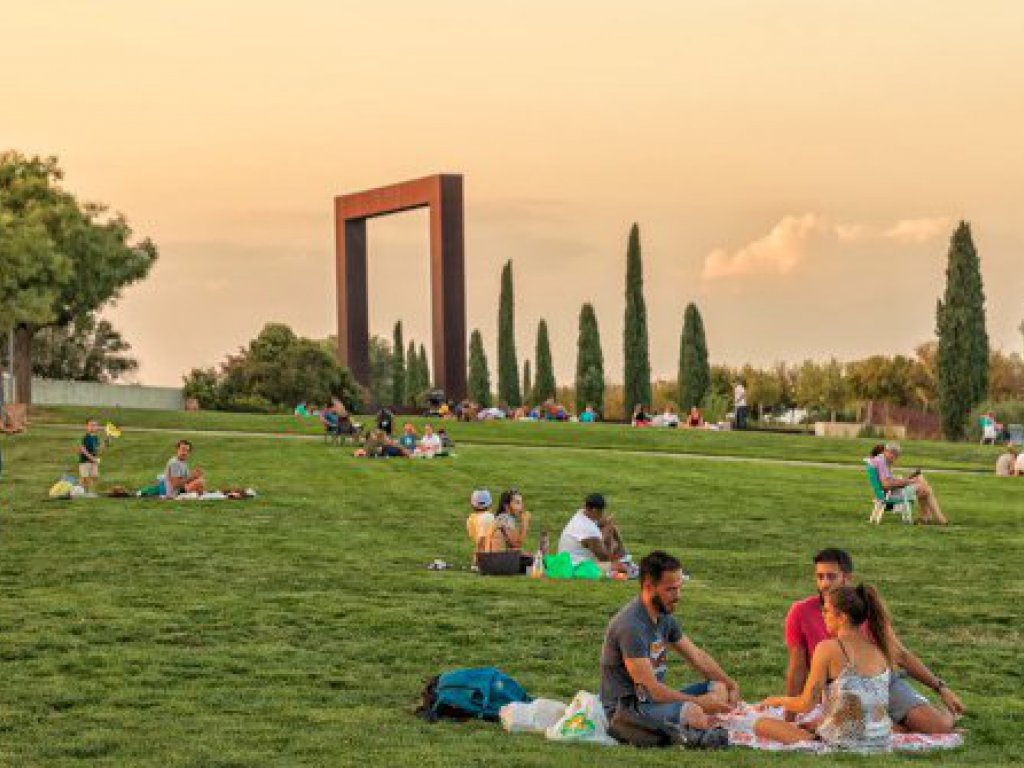
Former country estates
Although the best time to visit Quinta de los Molinos is in February when its almond trees are in bloom, the park is also lovely in the autumn. Despite being very close to the city centre, next to Suanzes metro station, in its heyday it was on the city’s outskirts where Madrid’s aristocrats once had their summer homes when Philip II chose the city as the seat of the royal court. In the early 20th century, the Count of Torre Arias donated some land to the architect César Cort, who bought additional adjacent land to enlarge the property, on which he built several mansions. One of them now houses Espacio Abierto Quinta de los Molinos, a cultural centre geared towards children and young people. The park’s 25 hectares boast olive trees, cedars, plane trees, lilacs and more. There are multiple paths, and it’s best to wander down them aimlessly so you can stumble, here and there, across lakes, fountains, wells, ponds, an old tennis court and the two windmills the park is named after. They were brought over from the USA around 1920 to extract water for irrigation.
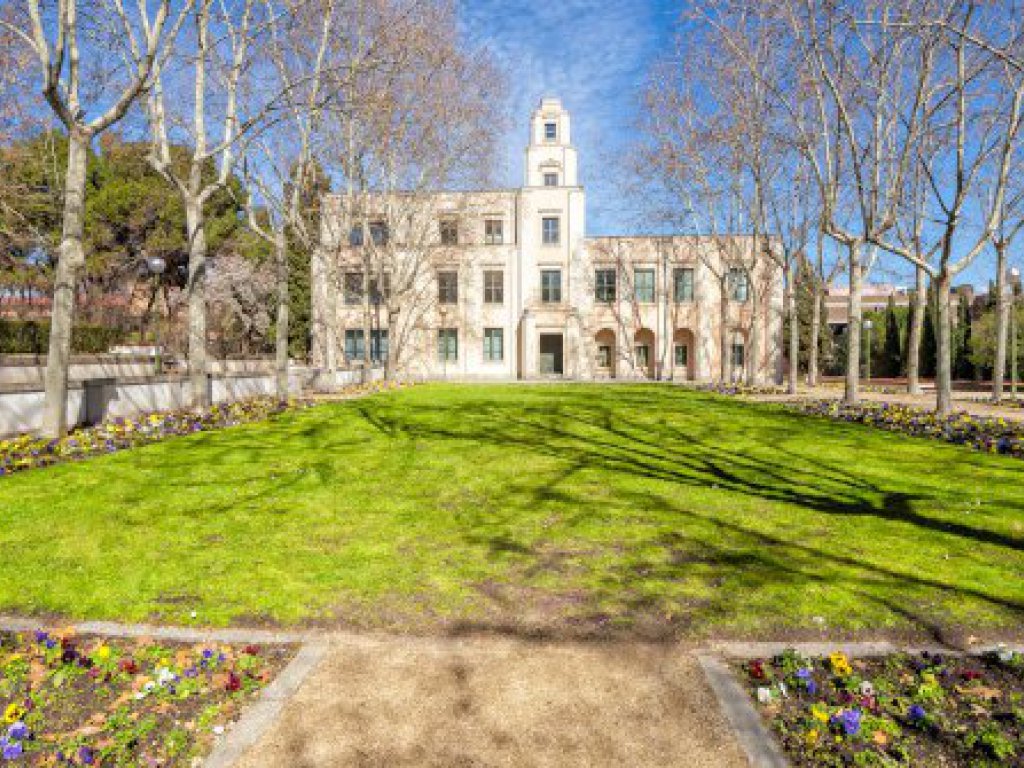
Almost all of the former country estates built on the outskirts of the city reached the height of their splendour in the 19th century. One of them was the nearby Quinta de Torre Arias. Its gardens hold 51 different species of trees, most notably a 300-year-old holm oak. Guided tours are often offered by environmental educators, although the best thing to do here is to imagine what life was like in the park’s red palace. What a pity we can’t go inside! Among its extravagances was even a Persian-style dressing room.
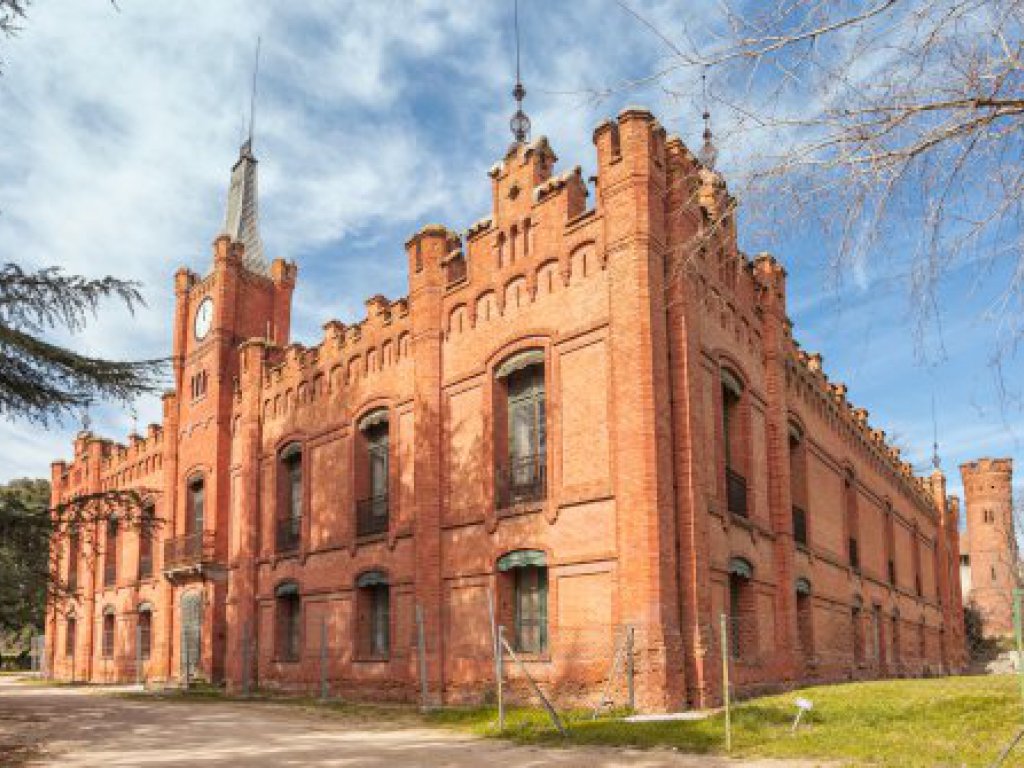
In the eastern part of the capital, the Abroñigal stream once flowed along the old riverbed where the M-30 motorway now runs. The Duke of Frías and Count of Haro, constable of Castile, bought several plots of land there during the reign of the Catholic Monarchs. The land was later acquired by Philip IV. Until it was eventually ceded to some Benedictine monks, the royal family constantly praised the quality of its water and named the site Quinta de la Fuente del Berro (Watercress Fountain Estate). In the 19th century, it became a recreational park for the bourgeoisie, because, wait for it...back in the day it even held an amusement park! It was called the New Elysian Fields and it had a merry-go-round and a roller coaster. The most notable features you’ll find here today are the monuments to poets Bécquer and Pushkin, fountains, waterfalls, two ponds and a mansion. The park’s most famous inhabitants, however, are its peacocks.
Quinta de Vista Alegre, in the district of Carabanchel, was built in 1802 but rose to the height of its glory in the mid-19th century when it was the summer home of Maria Christina of the Two Sicilies, Ferdinand VII’s fourth wife. Later on, it belonged to the Marquis of Salamanca, who bought the property for 2.5 million coins of the time. Its palace, which now holds the Regional Innovation and Training Centre, housed a valuable art collection. There’s still one more former country estate for us to enjoy: Huerta de la Salud in the district of Hortaleza, which the lawyer Pedro Tovar turned into an industrial agricultural complex in the late 19th century. Its enormous silo stands as a testimony to its past. The giant polygonal tower, together with the granary and dovecote which were demolished in the 1970s, was much admired. The storks that nested atop all of them announced the arrival of spring to the area’s residents.
